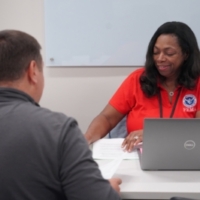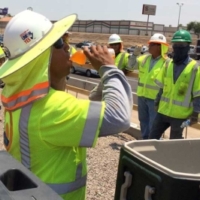Climate Justice at Work
Climate change is shifting what a good job looks like. When danger strikes, workers must be able to take control over their own safety in the workplace.
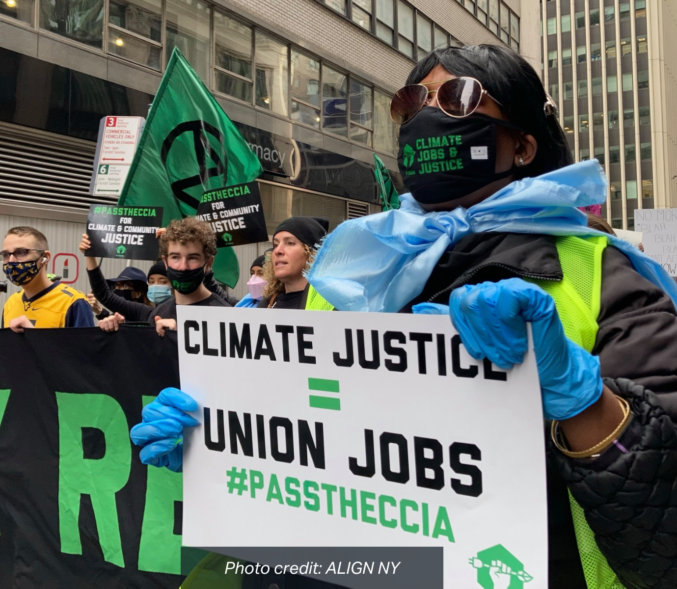

Our Vision for Climate Justice at Work
Climate change is shifting what a good job looks like. This is especially true for immigrant workers and workers of color who’ve been shunted into outdoor occupations. Because they’re working in agriculture, waste and remediation services, and construction, they’re at greater risk of harm from natural disasters and extreme weather.
When danger strikes, workers must be able to take control over their own safety in the workplace.
In a good-jobs economy, climate justice must include:
- Legal protections for workers to refuse dangerous work.
- Paychecks that are enough to afford safe housing.
- Sick leave to care for your family in a climate crisis.
- Better safety measures at work to respond to new and emerging dangers.
- Strong anti-retaliation protections so that workers can speak up without risking their jobs.

Refusing Unsafe Work Is a Human Right
Climate change is resulting in more frequent storms and more volatile and extreme weather, making it even more dangerous for workers in at-risk jobs.
FEMA’s National Risk Index shows that no state is completely safe from climate disasters like wildfire, flooding, heat and cold waves, tornadoes and hurricanes, and drought.
That’s why all workers must have the right to refuse unsafe work during natural and human-made emergencies and disasters—without fear of discipline or termination for putting their safety first.
To confidently use this right, workers need:
- Job-protected paid time off
- Access to unemployment benefits
- Vigorous enforcement of protections by public agencies
Climate Change Affects Workers' Lives and Livelihoods
million workers are employed in industries that can routinely place them at risk from climate dangers.
states have workplace safety rules to protect against exposure to extreme heat.
workers who die from heat-related causes die in their first week on the job.

| Crop production | 2.2% | 0.7% | 30.0% |
| Animal production | 3.9% | 0.9% | 22.2% |
| Support activities for agriculture and forestry | 7.5% | 0.5% | 21.7% |
| Oil and gas extraction | 8.6% | 5.7% | 28.3% |
| Construction | 6.7% | 1.7% | 34% |
| Durable goods manufacturing | 9.6% | 8.0% | 16.0% |
| Food manufacturing | 15.0% | 6.2% | 30.2% |
| Transportation and Warehousing | 22.7% | 5.8% | 22.2% |
| Utilities | 9.5% | 4.1% | 14.6% |
| Food service and drinking places | 12.3% | 7.8% | 28.8% |
| Repair and maintenance | 8.0% | 3.3% | 27.9% |
| Landscaping services | 8.1% | 1.5% | 46.5% |
| Waste management and remediation services | 13.6% | 2.3% | 23.8% |
Black, Asian, and Latinx workers have in particular been sorted into jobs that put them in the dangerous path of excessive heat, floods, extreme cold, wildfires, and wind. [Source: BLS household data, employed persons by detailed industry, sex, race, and Hispanic or Latino ethnicity. 2023 data.]
Listen to Workers About Climate Change
Workers are speaking out—and walking out—demanding the right to protect themselves from climate-related workplace harm.
¡Qué Calor! Campaign
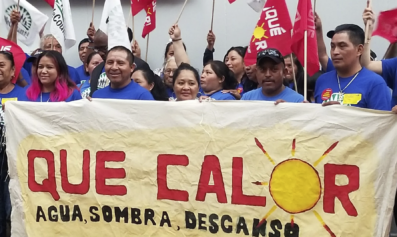
This worker-led campaign is fighting to win life-saving protections for outdoor workers in South Florida.
Amazon Employees for Climate Justice
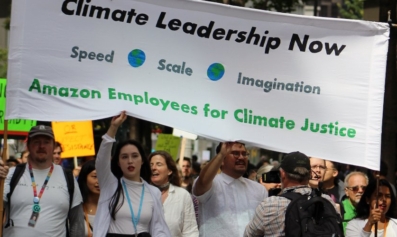
Amazon tech workers are joining together to speak truth to power and hold their employer accountable.
UPS Workers: 'We Can't Rely on Management. We Have to Keep Each Other Safe'
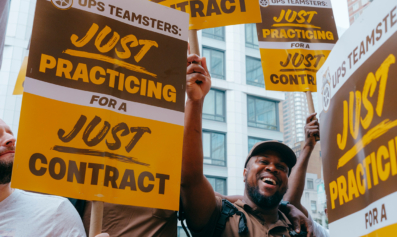
UPS workers scored a huge victory in 2023, winning air conditioning in UPS delivery trucks.

